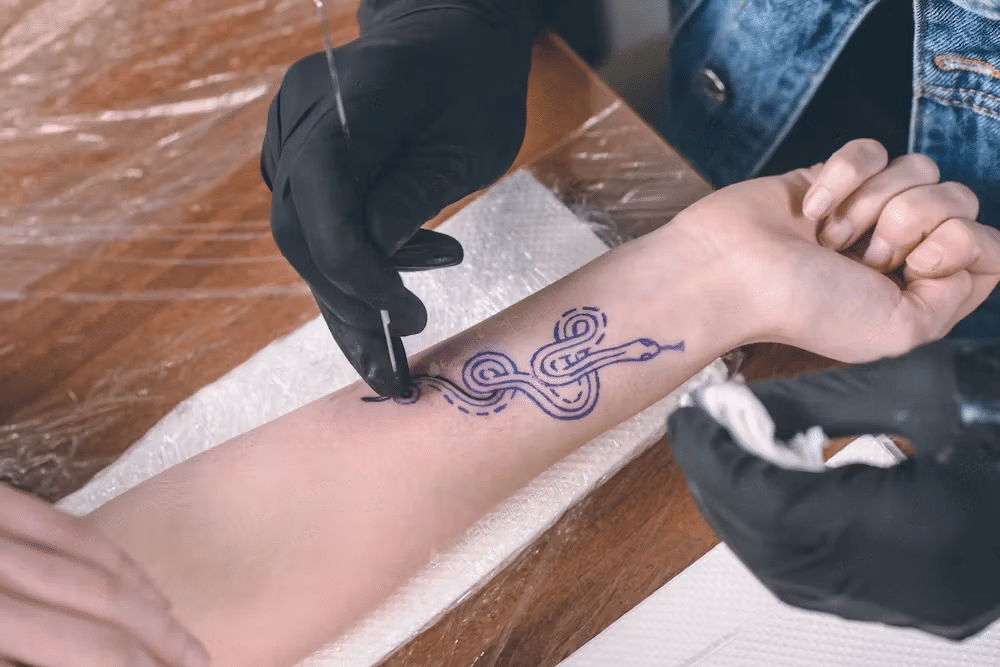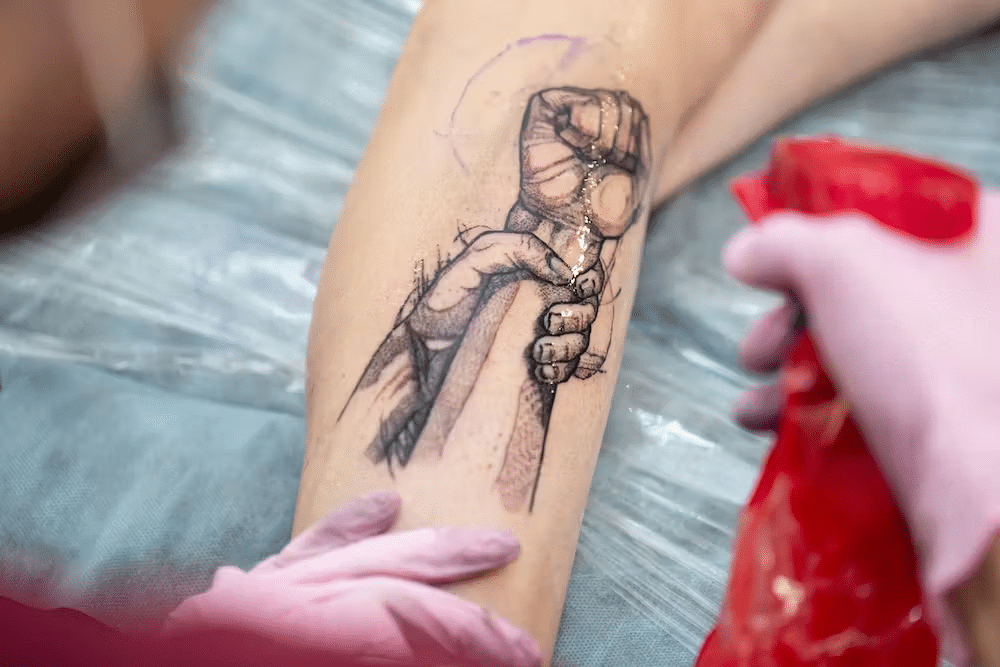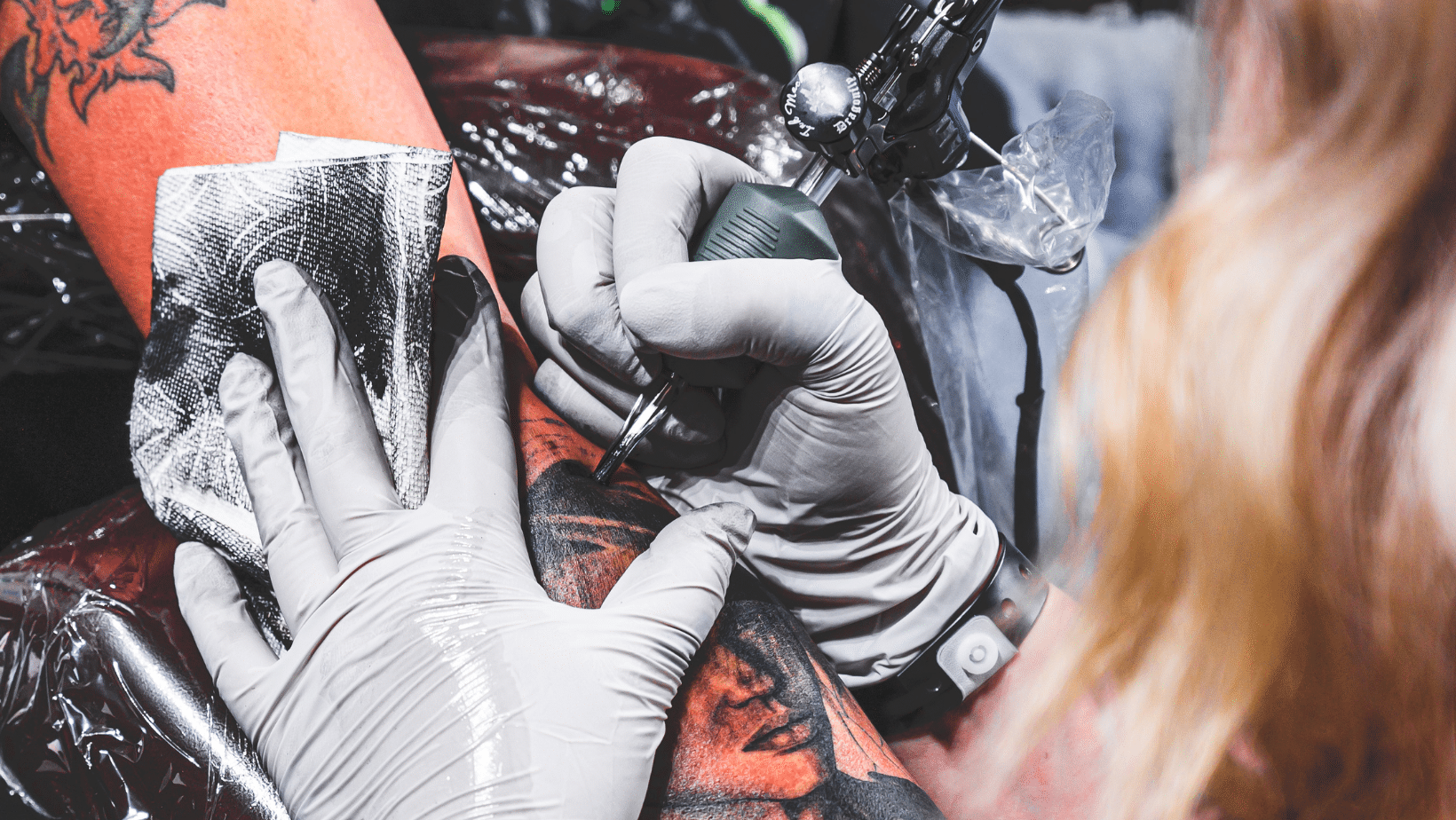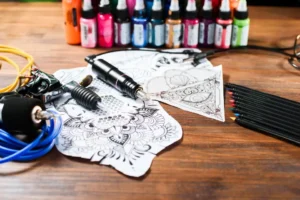
Are you looking for a way to remove your stick-and-poke tattoo? It’s understandable. After all, getting rid of decisions made in the past can be liberating. But how do you go about it? You may have heard horror stories of botched DIY attempts or felt unsure about what techniques are available.Worry no more.In this guide, we’ll provide a comprehensive overview of stick-and-poke removal, including preparation, aftercare, tips, risks and more. So if you’re ready to say goodbye to your old ink and move on with life, let’s start.
Everything You Should Know
Before you get a stick-and-poke tattoo, it’s important to understand the process and what’s involved. Stick-and-poke tattoos are done by hand, using a single needle and ink. This method can be more painful than machine tattoos and has a higher risk of infection. Additionally, it takes much longer to complete than when using a tattoo gun.In order to ensure your safety and satisfaction with the final product, there are some key factors to consider before getting a stick-and-poke tattoo:
- Make sure the artist is experienced in this style of tattooing. Ask for recommendations from friends or do research online to find reliable artists in your area.
- Make sure that all supplies used for the procedure are sterile and disposable — needles should never be reused.
- Be sure to follow aftercare instructions properly; proper healing is needed for optimal results. With these tips in mind, you’ll be well on your way to getting the perfect stick-and-poke.
Choosing A Stick-And-Poke Removal Technique
When it comes to Stick-and-Poke removal, there are several techniques available. Your choice will depend on a variety of factors, including the size and colour of your tattoo, as well as the experience of your specialist.
Laser surgery is often recommended for larger tattoos and those with darker inks, while skin excision is suitable for smaller and lighter tattoos.Before making a decision on which technique to use, consult with a dermatologist or tattoo removal specialist to determine the best option for you. Make sure to ask any questions you may have about the procedure, such as how many sessions you’ll need and what kind of aftercare is needed.
Risks Of Removing A Tattoo Yourself
Removing a tattoo at home can be
dangerous and ineffective. The FDA,
American Academy of Dermatology, and other health and safety organisations have tested DIY
tattoos removal options like ointments, creams, and natural pigmentation lighteners without finding evidence that any of them work.Attempting to remove a tattoo yourself is also
painful; certain creams and peels contain harsh chemicals that can cause irritation, swelling, or burning on your skin. Moreover,
you can increase the risk of infection if you do not use sterile equipment or practice proper aftercare.To avoid these risks, it’s essential to consult a qualified dermatologist who can assess the size and colour of your tattoo and recommend the best removal technique for you. Doing so will help ensure that you get safe results with minimal discomfort.
How To Prepare For Your Tattoo Removal
Before undergoing any type of
tattoo removal procedure, it’s important to take the necessary precautions to ensure that your procedure is successful and free from complications. Here are some tips on how to properly prepare for your tattoo removal:
- First, visit a dermatologist prior to your appointment. This will help you determine the best method of removal and provide you with a personalised plan. It’s also important to keep the area out of the sun for at least two weeks before your appointment, as sun exposure can complicate the process.
- Additionally, make sure that you avoid using any topical creams or ointments on the tattoo in advance of your procedure.
- Lastly, be sure to wear loose-fitting clothing on the day of your appointment so that it won’t interfere with treatment.
Following these steps can help ensure that you have a safe and successful experience when removing your tattoo.
Steps To Removing A Stick And Poke Tattoo

Removing a stick-and-poke tattoo is possible but can be complicated. The process requires patience, as it usually takes several sessions to fully remove the ink from your skin. Here are the steps you should take:1. Consult a dermatologist – This step is crucial
for getting advice on which removal specialists are worth choosing and which you should stay away from.2. Choose the right specialist – Find
an experienced and reliable specialist specialising in stick-and-poke removal.3. Prepare your body – Depending on the size of the tattoo, you may need to prepare your body by
exfoliating, moisturising, and avoiding direct sunlight before each session.4. Follow aftercare instructions – Proper aftercare is key to successful removal; make sure to
follow all instructions given to you by your specialist!5. Be patient – Most tattoos require
multiple sessions to completely remove, so don’t give up too soon if you don’t see immediate results. With patience and diligence, you’ll eventually get rid of that unwanted stick-and-poke tattoo.
Pros And Cons Of Stick And Poke Tattoos
Stick-and-poke tattoos are becoming increasingly popular for their simple, DIY-style approach. As with any tattoo, there are pros and cons to consider before committing to the process.The primary benefit of stick-and-poke tattoos is that
you can easily customise the design based on your own creative vision. Additionally, they are typically
cheaper than professional tattoos due to the lack of machinery involved. Plus, since your artist will be creating each dot by hand, you can expect
a much more personal experience—making it that much more meaningful for many people.However, there are also drawbacks to keep in mind. Stick and poke tattoos often
take longer than other methods because of the amount of time required to create each individual dot. Furthermore, if not done properly or with the right equipment, these types of tattoos have
a higher risk of infection or scarring—making it important to research artists thoroughly before making an appointment.Ultimately, when deciding whether or not a stick-and-poke tattoo is right for you, it’s important to weigh both the pros and cons so that you can make an informed decision.
Conclusion
Removing a stick-and-poke tattoo is a serious decision, and it’s important to educate yourself on the process before making any decisions.
Preparation is key when it comes to stick-and-poke removal, as the technique you choose will depend on the size, age, and location of your tattoo.Additionally, it’s important to
consult with a professional for advice on what methods are best for your specific situation. With proper preparation and aftercare, you can look forward to a successful stick-and-poke removal.
FAQ
Do stick-and-poke tattoos go away fast?
The odds are your stick-and-poke tattoo won’t grow old with you.
They fade faster than their professional counterparts. This is particularly the case if you apply them on areas that you clean often. Despite fading quicker, they still remain in some form.
How many sessions does it take to remove a small stick and poke tattoo?
For most patients, our doctor recommends
4-8 treatment sessions. These sessions will be scheduled 6-8 weeks apart, giving your body time to remove the fragmented ink particles from your system between treatments.
How long does it take a stick and poke to fade?
On average, a stick-and-poke tattoo will last
between five and ten years, depending on where it is and how it’s been cared for. After this length of time, a stick-and-poke tattoo will generally look very washed out and faded. Hand and finger designs often fade within a few years since we wash these places regularly.
 Are you looking for a way to remove your stick-and-poke tattoo? It’s understandable. After all, getting rid of decisions made in the past can be liberating. But how do you go about it? You may have heard horror stories of botched DIY attempts or felt unsure about what techniques are available.Worry no more.In this guide, we’ll provide a comprehensive overview of stick-and-poke removal, including preparation, aftercare, tips, risks and more. So if you’re ready to say goodbye to your old ink and move on with life, let’s start.
Are you looking for a way to remove your stick-and-poke tattoo? It’s understandable. After all, getting rid of decisions made in the past can be liberating. But how do you go about it? You may have heard horror stories of botched DIY attempts or felt unsure about what techniques are available.Worry no more.In this guide, we’ll provide a comprehensive overview of stick-and-poke removal, including preparation, aftercare, tips, risks and more. So if you’re ready to say goodbye to your old ink and move on with life, let’s start. Removing a stick-and-poke tattoo is possible but can be complicated. The process requires patience, as it usually takes several sessions to fully remove the ink from your skin. Here are the steps you should take:1. Consult a dermatologist – This step is crucial for getting advice on which removal specialists are worth choosing and which you should stay away from.2. Choose the right specialist – Find an experienced and reliable specialist specialising in stick-and-poke removal.3. Prepare your body – Depending on the size of the tattoo, you may need to prepare your body by exfoliating, moisturising, and avoiding direct sunlight before each session.4. Follow aftercare instructions – Proper aftercare is key to successful removal; make sure to follow all instructions given to you by your specialist!5. Be patient – Most tattoos require multiple sessions to completely remove, so don’t give up too soon if you don’t see immediate results. With patience and diligence, you’ll eventually get rid of that unwanted stick-and-poke tattoo.
Removing a stick-and-poke tattoo is possible but can be complicated. The process requires patience, as it usually takes several sessions to fully remove the ink from your skin. Here are the steps you should take:1. Consult a dermatologist – This step is crucial for getting advice on which removal specialists are worth choosing and which you should stay away from.2. Choose the right specialist – Find an experienced and reliable specialist specialising in stick-and-poke removal.3. Prepare your body – Depending on the size of the tattoo, you may need to prepare your body by exfoliating, moisturising, and avoiding direct sunlight before each session.4. Follow aftercare instructions – Proper aftercare is key to successful removal; make sure to follow all instructions given to you by your specialist!5. Be patient – Most tattoos require multiple sessions to completely remove, so don’t give up too soon if you don’t see immediate results. With patience and diligence, you’ll eventually get rid of that unwanted stick-and-poke tattoo.



